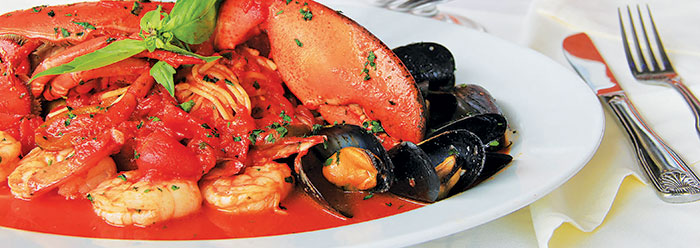After looking over a long list of “living fossils”—living creatures with fossil look-alikes—I realized many of them are found on today’s seafood menus. What delectable dishes could a Mesozoic seafood restaurant offer a friendly T. rex family? Using real fossils to answer this whimsical question offers new reasons to think that Noah’s recent Flood, rather than eons of evolution, deposited the dinosaur-rich rock layers found all over the earth’s continents.
This thought came to mind when a reader asked ICR if we knew of an exhaustive list of living fossils on the Internet. The best we could find was an incomplete list on Wikipedia. Then we remembered medical doctor Carl Werner’s book Living Fossils, complete with dozens of full-color photos of living and fossil plants and animals set side by side.1 With Dr. Werner’s permission, a simple list of the living fossils in his book is now available online.2 Hopefully, more folks can see that the familiarity of the life forms that died alongside dinosaurs opposes the evolutionary dogma of unlimited creature change. Now back to that Mesozoic menu.
Seafood restaurants offer fried calamari, shrimp, and mussels as appetizers. Sure enough, many Jurassic shrimp3 and Cretaceous mussels4 look essentially the same as those alive today. What about calamari? Dinosaur rocks also contain fossil squid. One found in England in 2009 had dried ink still in its ink sac.5
Mrs. T. rex might choose Jurassic lobster as her main course. The fossil Palinurina looks just like the living spiny lobster Panulirus, and evolutionists might as well have given the lobster fossil Eryma the same name as the living, delicious Maine lobster Homarus.1
Mr. T. rex can really put it away, so he orders scallops, oysters on the half shell, and a clam bake—creatures that all occur as fossils in dinosaur-containing rock layers. He could wash down his delicacies with sassafras tea—a modern tree that’s also a living fossil.
Finally full, the T. rex family considers what to try on their next visit. The Mesozoic menu lists sturgeon, eel, flounder, herring, angel shark, goblin shark, and a favorite—orange roughy. Later, they could visit the Cajun restaurant at the other end of Sedimentary Street and try turtle soup, frog legs, gumbo, alligator tail, and, of course, roasted duck with sautéed pine nuts and walnuts. That’s right—duck fossil remains and walnut tree leaf fossil impressions inhabit the same rocks that include dinosaur bone fossils.
Dr. Werner used these species to test evolution. He wrote, “I predicted that if evolution was not true, then…I should find fossils of modern animal and plant species in the ‘older’ fossil layers.”6 With each living fossil found, his faith in evolution shrank.
Does the Bible better explain the amazing array of living fossils? In the beginning, God created sea creatures, swamp plants, dinosaurs, and all the other animals. Later, Noah’s Flood mixed and deposited many of them together during different phases of that terrible year. This explains why dinosaur rock layers hold so many fossils of plants and animals that looked virtually the same then as they do today.
References
- Werner, C. 2009. Living Fossils, Evolution: The Grand Experiment, vol 2. Green Forest, AR: New Leaf Press.
- Bob Enyart, host of the KGOV radio show Real Science Friday, and I worked together to get permission to compile and post the list. The Living Fossils List from Carl Werner is available through the link in the online article “RSR: Dr. Carl Werner and the Living Fossils” posted on kgov.com.
- The fossil shrimp Antrimpos resembles living shrimp Litopenaeus.
- The fossil mussel Mytiloides resembles living mussel Mytilus.
- Glass, K. et al. 2012. Direct chemical evidence for eumelanin pigment from the Jurassic period. Proceedings of the National Academy of Sciences. 109 (26): 10218-10223.
- Werner, Living Fossils, 10.
* Mr. Thomas is Science Writer at the Institute for Creation Research.





